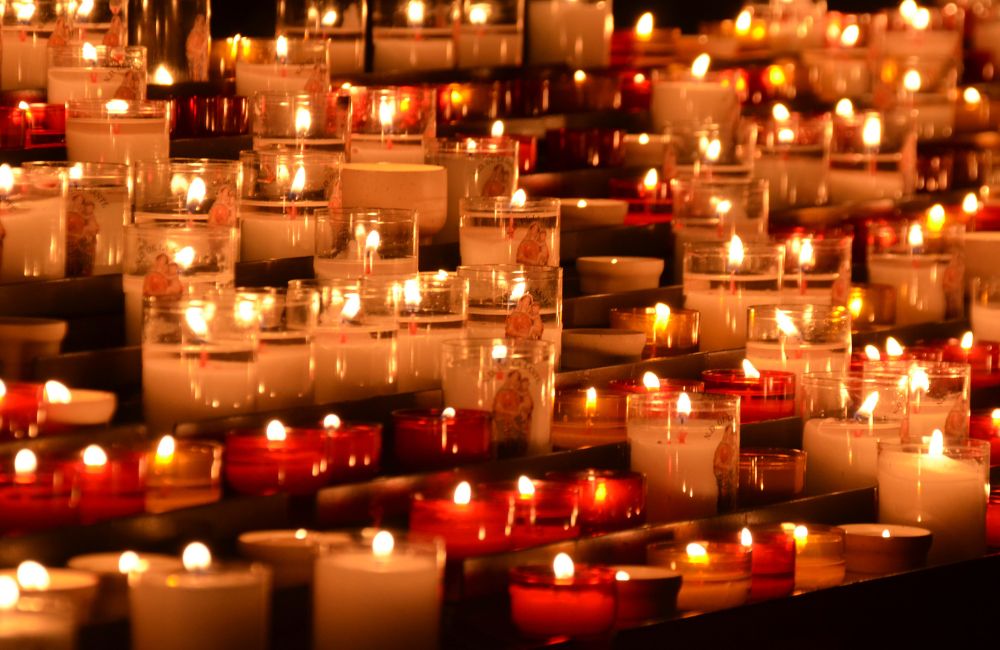Next week, BRLSI will host a discussion on the cultural and funereal customs surrounding grief, through the ages, and despite its commonality to each and everyone of us, Grief as a concept is seemingly being discussed at a larger extent and with more openness than ever before, with notable works such as ‘Grief is the thing with feathers’ by Max Porter, and ‘Faith, Hope and Carnage’ by Nick Cave entering the public consciousness and garnering rave reviews. Grief is both a universal experience and deeply personal one which incorporates the individual with cultural tradition, and a notable, and early, part of the grieving process is the funerary custom.
Why do we need such customs? Dr Mary-Frances O’Connor claims that grieving rituals are necessary to help people feel grounded in a time of uncertainty by rooting ourselves in tradition, reminding ourselves that we are not alone and that others have been through this too. In this sense, funerary traditions seem vital for people in the grieving process. However, tradition means different things in different places. It is perhaps assumed, from a western perspective, that a funerary custom should take place over the course of a single day, and require solemnity and black clothing. This is not necessarily the case in other cultures.
In the sky burial ritual in Tibet, the deceased body (which is taken apart) is placed on a mountaintop to decompose, and is exposed to the elements, which includes hungry vultures. The significance the body has within this culture is different due to the belief that it is purely an empty vessel, a soulless thing, and this is part of the Buddhist belief in the impermanence of life. Through placing the body on the mountain top where it can be consumed by vultures and the soil, nourishment is being provided and it has use. The belief in reincarnation is important here, and death is seen as a transition into a new state as opposed to a permanent ending.
The Madagascan tradition of Famadihana is interesting as it is an ongoing process in which the dead are exhumed, wrapped in cloth, have their names written on the cloth in which they’re wrapped, and then are danced with before they are returned to their tombs. This is a celebration of life, and in the past was repeated every five or so years as a way of uniting family members together. Unlike in other cultures, the dead continue to have a relationship with the living that extends past the initial burial rite.
In New Orleans there is the funeral with music, with the music typically being jazz. The custom synthesises Christian beliefs with Yoruba ones and has a sense of sombreness and joy. Sombreness before burial, and joy afterwards.
In Hindu ceremonies, the colour used for a funeral is typically white, for purity. White is also the traditional colour of mourning in China. Interestingly enough, white was also a common mourning colour in the United Kingdom until the 19th century when Queen Victoria wore black after the death of Prince Albert.
It seems curious that grief, such a universal response to the loss of a person with whom you had a bond – is only now becoming a widespread topic of discussion. Could it be that as a result of many people’s inability to grieve in a way that felt right during the pandemic, an unfulfilled expression of mourning that is now able to be experienced, it’s becomes a collective feeling that grief has never been spoken about with real candour before, and its now emergence in public discussion comes as part of a larger conversation in which other societal norms are being re-evaluated. It could also be a signifier of a wider cultural connectedness and a rejection of the western idea that grief is a lonely thing that we should do quickly, and quietly; a collective desire to grieve together as part of a community.
Of the multiple theories of how the grieving process takes place, the most notable perhaps is that of Elisabeth Kübler-Ross. Her model on the five stages of grief: denial, anger, bargaining, depression, and acceptance, has been frequently utilised as the leading model of grief in a multitude of media and mental health contexts, and has become perhaps the universal touchstone for many. However, many individuals and mental health professionals openly question whether having such a defined model of grief can be of help, having not experienced each of the individual emotions during their own process of grieving and certainly not sequentially. Is it right to feel you might be grieving incorrectly?
Whatever your thoughts and feelings, Monday night’s talk promises to be a fascinating one, and with us will be:
Dr Molly Conisbee, who has a PhD on the social history of dying and is author of the upcoming Wellcome book No Ordinary Deaths: a people’s history of Mortality. She has devised and guided over fifty history walks all over the UK, including Bath, exploring themes of dying, death, grief, memorial, politics and the environment.
Dr Helen Frisby, who has a PhD on Victorian funeral customs. She publishes and speaks widely on the history and folklore of death, dying and bereavement, including appearances on the History Channel, BBC and ABC Radio. Helen is author of the Shire book Traditions of Death and Burial.
Dr Kate Woodthorpe, who is co-director of the Centre for Death and Society at the University of Bath. Published widely on funeral practices, cemetery usages, and families at the end of life, she has advised the Department for Work and Pensions, the Scottish Government and the Competition and Markets Authority on all things funerals and grief related.
Book now for an informed discussion promising to shine light on a subject too often thought best left in the dark.
By Jack Gay
To book: https://www.brlsi.org/whatson/grief-past-present/

